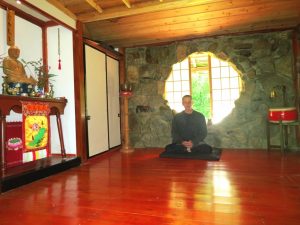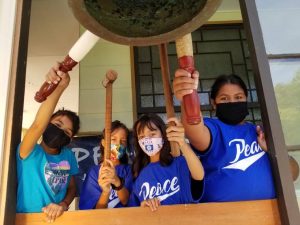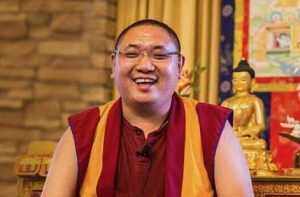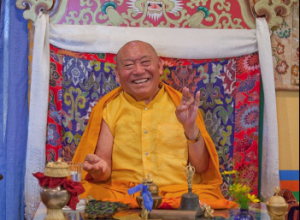
I wrote the first installment of my essay series on the Shikoku pilgrimage about six weeks ago in Kōchi.1 As I mentioned in that essay, the pilgrimage is divided into four sections corresponding to the four prefectures the pilgrim path (henro michi) traverses—the “the dōjōs:” to “arouse the mind” (hosshin), of “self-cultivation” (shugyō), of “wisdom and enlightenment” (bodai), and of “nirvāṇa” (nehan). Kōchi Prefecture constitutes the “the dōjō of self-cultivation.”
In this essay, I would like to focus on what we practice on this pilgrimage. I will use the concept of attunement that my adviser Shigenori Nagatomo introduced in his captivating monograph Attunement Through the Body.
Kōchi Prefecture, like most of Shikoku, is home to immense natural beauty. It also contrasts the bustling city life of Kōchi City with extremely remote areas. Among pilgrims, Kōchi Prefecture is known as the part of the pilgrimage path that features the longest stretches between temples and, more importantly, without any pilgrim accommodation (yado), most famously the stretches between temples 23 and 24, between temples 37 and 38, and between 38 and 39. Temple 38, located at Cape Ashizuri, for example, provides a stunning reward for the roughly 80-kilometer (2–3 day) hike from temple 37. So it is obvious that the pilgrimage combines physical practice, extreme hiking in forest-covered hills/mountains anywhere between 200 and 900 meters above sea level—with an astounding number of steep inclines and stairs—and the spiritual practice of chanting sūtras and mantras as well as devotional and commemorative rituals at the altars.1
But what do we practice here? On a basis level, we practice a lot of everyday life skills and routines. The daily routine of succumbing to the often rigid schedule of the yado proprietors—5 p.m. bath, 6 p.m. dinner, 6 a.m. breakfast—planning the succeeding day, waking early, taking care of physical ailments, packing efficiently and sparingly, reducing our luggage to absolute necessities (for some people this means only one set of clothes that are washed every evening while the pilgrim takes a bath and, afterward, waits for their laundry in a yukata [summer kimono or bathrobe]), finding and following the myriad signs on the pilgrim trail ranging from your average street sign to little red arrows stuck to posts, houses, vending machines, street planks, and the road, making sure that one always has access to liquids, accepting gifts and hospitality (osettai) from and offering kindness to the people one meets, and living with nature including the blazing sun, thunderstorms, steep and sometimes treacherous forest paths, as well as seaside hikes, snakes, and wild boars. The pilgrims also practice the basic pilgrimage ritual1 as well as the chanting of sūtras and mantras. Most of all, however, one practices self-reflection. Walking 8–10 hours a day, mostly alone, confronts us with ourselves. As a little sign in the foothills of temple 60 reminds the passing pilgrims: “Passing encounters—encountering oneself” (deai o tooshite, jibun ni deau).
I believe that the pilgrimage facilitates the same kind of cognitive transformation as practice meditation. The Japanese Zen master Dōgen (1200–53) describes Buddhist practices in the Shōbōgenzō genjōkōan, as I discussed in an earlier essay,2 as follows: “To study the buddha-way is to study the self, to study the self is to forget the self, to forget the self is to be actualized by the 10,000 dharmas, to be actualized by the 10,000 dharmas, is to cast off body and mind of self and other.”3 In another essay, the Shōbōgenzō zazengi, Dōgen describes the mental practice of meditation as “thinking about not-thinking” by means of “non-thinking.”4 In some sense, “thinking” identifies the mental activity described as “to study the self;” “not-thinking,” “to forget the self;” and “non-thinking,” “to be actualized by 10,000 dharmas” and “to cast off body and mind of self and other.” Through the practice of walking, chanting, and living a ritualized daily routine, our self-understanding changes, ideas about ourselves that we believed to be true disappear, and we open ourselves to the world around us; the sun, the mountains, fellow pilgrims, and even snakes and wild boars.
Our daily life is permeated with dichotomies and tensions: what we want to do and what we can do; whom we believe we are and who we really are; where we want to be and where we are; literally and metaphorically. To understand the cognitive transformation facilitated by the practices of meditation and pilgrimage, the terminology Shigenori Nagatomo developed is very helpful. In his Attunement Through the Body, he developed a phenomenology of self-cultivation to apply Dōgen’s terminology into today’s languages and discourses. I believe that his interpretive schemata “can be applied to the practice of pilgrimages as well.”
Nagatomo uses the terms: “‘tensionality,’ the activity of attending ‘self-consciously to the body;’ ‘de-tensionality,’ the activity of attending ‘unself-consciously’ to the body; and ‘non-tensionality,’ the modality that ‘includes both the explicit/implicit modes of knowing’”5 to describe the three central stages in the practice of self-cultivation, be it meditation or pilgrimage. In other words, the repeated physical exercise central to self-cultivation practices such as meditation and pilgrimage shifts our focus from the mind, which some Zen Buddhists refer to as “monkey mind” (Ch: xinyuan, Jp: shin’en), to the body. Through these repeated practices, mind and body become attuned to each other and the dichotomies and cognitive dissonances of our daily life retreat into the back ground until they disappear. Our existence is filled with compassion for the “10,000 dharmas,” including snakes and wild boars.

While I personally never proceeded far beyond the modality of “tensionality,” except for an occasional foray into “de-tensionality,” walking for hours and completing the ritualized chanting at the temples, I certainly tasted this heart-and-mind-opening existential attitude. Since they propel us to enter nature and facilitate the encounter with human and other beings, sentient and non-sentient, I believe pilgrimages have the potential to not only help us with aforementioned life practices but, moreover, to facilitate the cognitive transformation that, according to many Buddhist thinkers and practitioners, fill us with wisdom (prajñā) and compassion (karuna). This is the core of Mahāyāna Buddhism.

1 Religion as Practice: The Shikoku Pilgrimage in Japan (BDG)
2 Who Am I — Self-discovery in Japanese Zen Practice (BDG)
3 Ōkubo, Dōshū, ed. 1969–70. Dōgen zenji zenshū (Complete Works of Zen Master Dōgen). Two volumes. Ed. Tokyo: Chikuma Shobō. [Abbr. DZZ], 1:7.
4 DZZ 1:89.
5 Gereon Kopf, “Envisioning Multi-Cultural and Multi-Disciplinary Engagement: Lessons from the Twelve Wolf Encounter Pictures,” Culture and Dialogue Vol. 10, No. 1 (July 2022), 60–94, 89. Shigenori Nagatomo, Attunement Through the Body. Albany: SUNY Press, 1992, 224–49.
Related features from BDG
Pilgrimage: Journey to Outer and Inner Landscapes
Pilgrimage: Hongluosi, Home to Priceless Artifacts and Heartwarming Legends
Journey to the Buddha’s Homeland: Rediscovering Pilgrimage Sites in Nepal
Pilgrimage: Mount Jiuhua, Kshitigarbha’s Geopark
From Alena to Yushu, Part 2: Mountain Training
From Alena to Yushu, Part 1: How I Found My Way to Shugendo
















